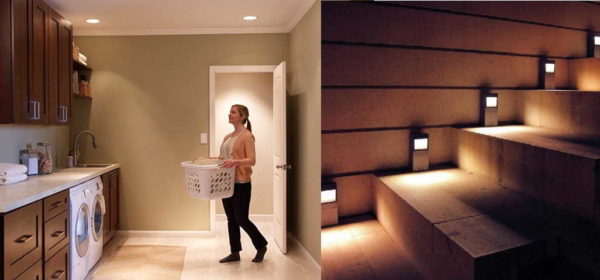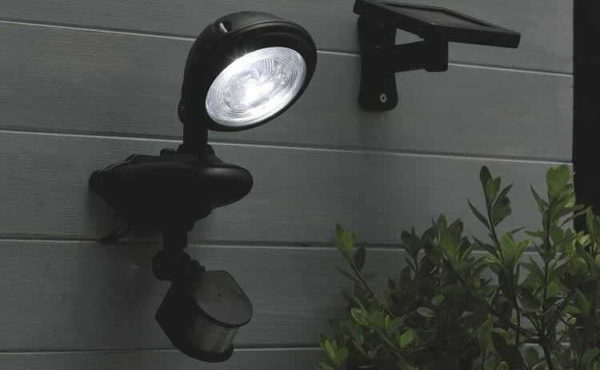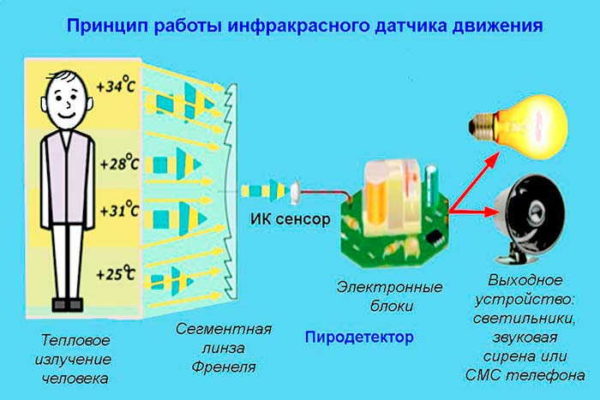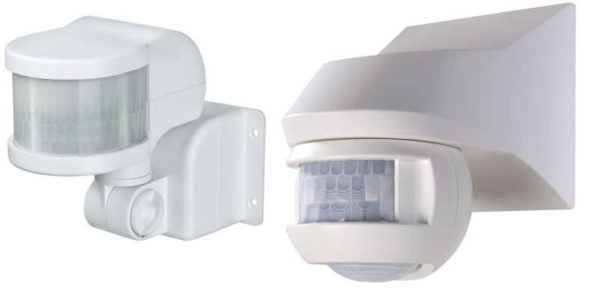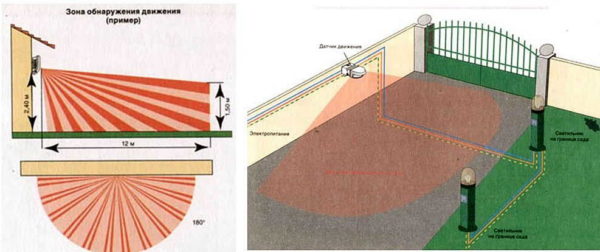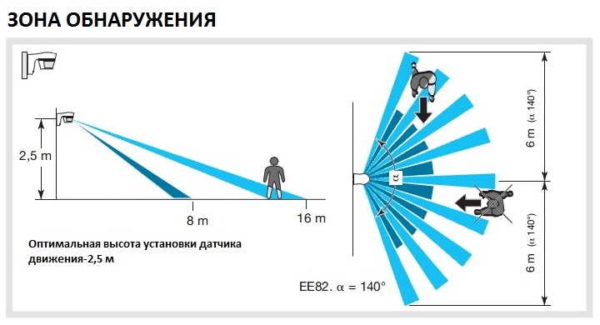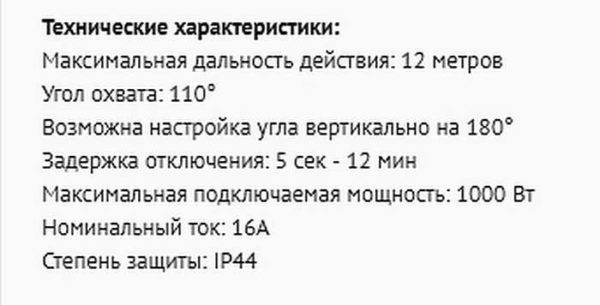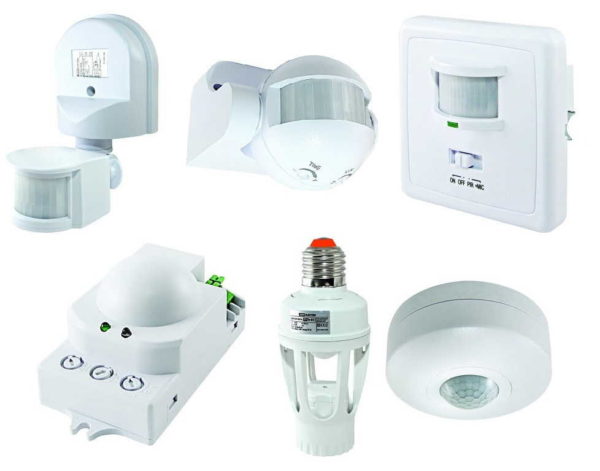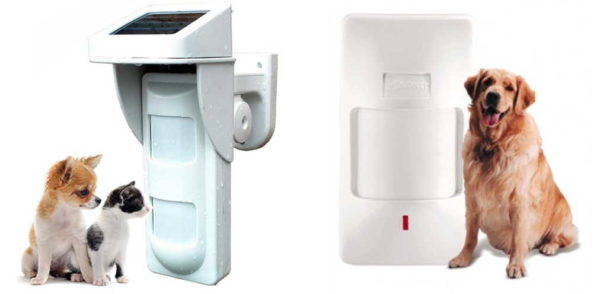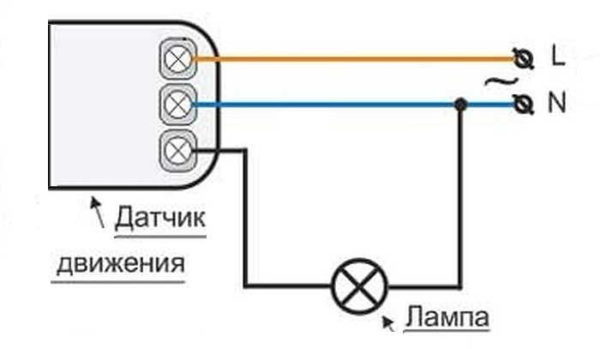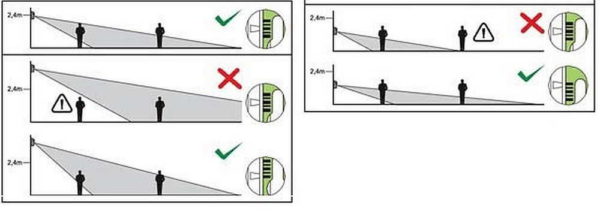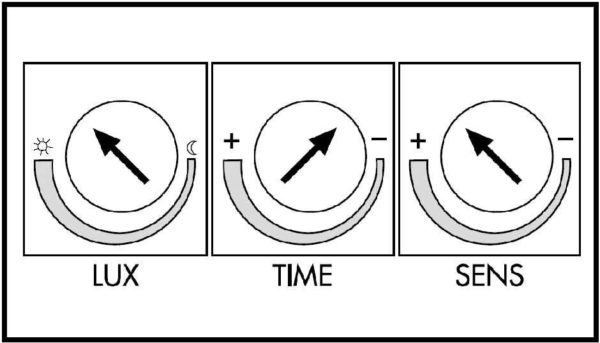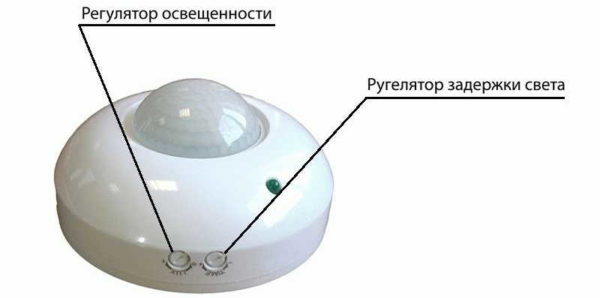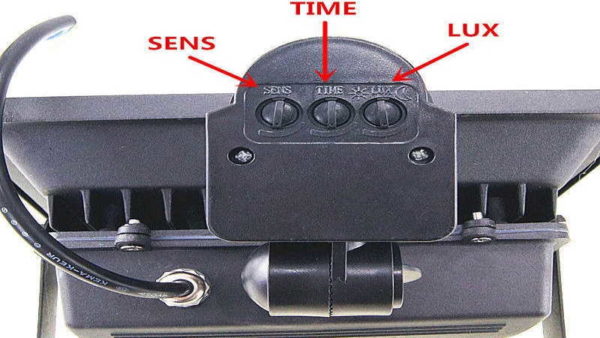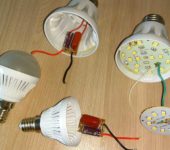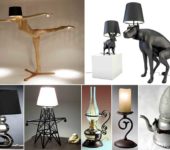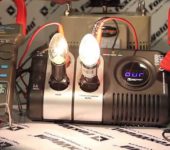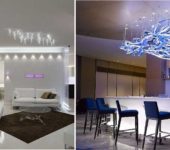Motion sensor to turn on the lighting
It is unreasonable to turn on lighting in some rooms or on the street for the entire dark period. In order for the light to burn only when needed, a motion sensor is placed in the luminaire power circuit. In the "normal" state, it breaks the power circuit. When a moving object appears in its area of action, the contacts close, the lighting turns on. After the object disappears from the range, the light turns off. Such an algorithm of work proved to be excellent in street lighting, in the lighting of utility rooms, corridors, basements, entrances and stairs. In general, in those places where people only appear periodically. So for economy and convenience it is better to put a motion sensor to turn on the light.
The content of the article
Types and varieties
Motion sensors for turning on the light can be of different types, designed for different operating conditions. First of all, you need to look where the device can be installed.
Outdoor motion detectors have a high degree of enclosure protection. For normal operation in the open air, they take sensors with an IP of at least 55, but better - higher. For installation in the house, you can take IP 22 and higher.
Food type
Next, you need to consider from which source the light sensor is powered. There are the following options:
- Wired sensors powered by 220 V.
- Wireless, battery or rechargeable powered.
The largest group is wired for connecting to 220 V. There are fewer wireless ones, but they are also enough. They are good if you need to turn on lighting that works from low-voltage power sources - batteries or solar panels, for example.
Method for detecting the presence of motion
The motion sensor to turn on the light can detect moving objects using different detection principles:
- Infrared motion sensors. They react to the heat generated by the body of warm-blooded creatures. They belong to passive devices, since they themselves do not produce anything, they only register radiation. These sensors also react to the movement of animals, so there may be false alarms.
- Acoustic motion (noise) sensors. Also belong to the passive group of equipment. They react to noise, they can turn on from a pop, the sound of a door being opened. They can be used in the basements of private houses, where the noise occurs only there someone enters. Restricted use elsewhere.
- Microwave motion sensors. They belong to a group of active devices. They themselves generate waves in the microwave range and track their return. In the presence of a moving object, close / open the contacts (there are different types). There are sensitive models that "see" even through partitions or walls. Usually used in security systems.
- Ultrasonic. The principle of operation is the same as that of microwave, the range of radiated waves differs. This type of device is rarely used, since animals can react to ultrasound, and prolonged exposure to humans (the devices constantly generate radiation) will not be beneficial.
- Combined (dual).Combines several methods of motion detection. They are more reliable, have fewer false positives, but are also more expensive.
Most often, infrared motion sensors are used to turn on lights on the street or at home. They have a low price, a large radius of action, a large number of adjustments that will help to customize it. On stairs and in long corridors, it is better to place a transducer with ultrasound or microwave. They are able to turn on the lighting even if you are still far from the light source. In security systems, microwave ovens are recommended for installation - they detect movement even behind partitions.
Specifications
After you have decided on which motion sensor you will install to turn on the light, you need to select its technical characteristics.
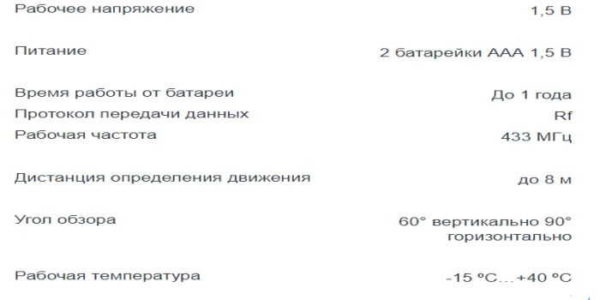
The technical characteristics of wireless models also include the frequency at which they operate and the type of batteries
Viewing angle
The motion sensor for turning on the light can have a different viewing angle in the horizontal plane - from 90 ° to 360 °. If the object can be approached from any direction, sensors with a radius of 180-360 ° are installed, depending on its location. If the device is mounted on a wall, 180 ° is sufficient, if on a pole, 360 ° is already needed. Indoors, you can use those that track movement in a narrow sector.
If there is only one door (utility room, for example), a narrowband sensor may be sufficient. If the room can be entered from two or three sides, the model should be able to see at least 180 °, and better - in all directions. The wider the "coverage", the better, but the cost of wide-angle models is much higher, so it is worth starting from the principle of reasonable sufficiency.
There is also a vertical viewing angle. In conventional low-cost models, it is 15-20 °, but there are models that can cover up to 180 °. Wide-angle motion detectors are usually installed in security systems, and not in lighting systems, since their cost is substantial. In this regard, it is worth choosing the correct installation height for the device: so that the “dead zone”, in which the detector simply does not see anything, is not in the place where the traffic is most intense.
Range of action
Here again, it is worth choosing taking into account whether a motion sensor will be installed in the room to turn on the light or on the street. For premises, a range of 5-7 meters is enough with a head.
For the street, it is desirable to install more "long-range". But look here too: with a large radius of coverage, false positives can be very frequent. So too much coverage may even be a disadvantage.
Power of connected lamps
Each motion sensor for turning on the light is designed to connect a certain load - it can pass a current of a certain rating through itself. Therefore, when choosing, you need to know the total power of the lamps that the device will connect.
In order not to overpay for the increased bandwidth of the motion sensor, and even save on electricity bills, use not incandescent lamps, but more economical ones - gas-discharge, fluorescent or LED.
Installation method and location
In addition to the explicit division into street and "home", there is another type of division according to the location of the motion sensors:
- Case models. Small box that can be mounted on a bracket. The bracket can be fixed:
- on the ceiling;
- on the wall.
- Recessed models for concealed installation. Miniature models that can be installed in special recesses in an inconspicuous place.
If the lighting is turned on only to increase comfort, body models are chosen, since with equal characteristics they are cheaper. Embedded are installed in security systems. They are miniature but more expensive.
Additional functions
Some motion detectors have additional capabilities. Some of them are overkill, others, in certain situations, can be useful.
- Built-in light sensor. If the motion sensor to turn on the light is installed on the street or in a room with a window, there is no need to turn on the light during daylight hours - the illumination is sufficient. In this case, either photo relay, or use a motion detector with a built-in photo relay (in one housing).
- Protection from animals. A useful function if there are cats, dogs. With this function, there are much fewer false positives. If the dog is large, even this option will not help. But with cats and small dogs, she works well.
- Light off delay. There are devices that turn off the light immediately after the object leaves the range. In most cases, this is inconvenient: light is still needed. Therefore, models with a delay are convenient, and even more convenient are those that allow this delay to be adjusted.
These are all functions that might be useful. Pay particular attention to animal protection and shutdown delay. These are really useful options.
Where to place
It is necessary to install the motion sensor to turn on the lighting correctly - for it to work correctly, adhere to certain rules:
- There should be no lighting fixtures nearby. Light interferes with correct work.
- There should be no heaters or air conditioners nearby. All types of motion detectors react to air currents.
- There should be no large objects. They obscure large areas.
In large rooms, it is best to mount the unit on the ceiling. Its viewing radius should be 360 °. If the sensor must turn on the lighting from any movement in the room, it is installed in the center, if only some part is controlled, the distance is chosen so that the "dead zone" of the ball is minimal.
Motion sensor for turning on the light: installation diagrams
In the simplest case, the motion sensor is connected to a break in the phase wire that goes to the lamp. If we are talking about a dark room without windows, this scheme is efficient and optimal.
Speaking specifically about connecting the wires, then the phase and zero are brought to the input of the motion sensor (usually L for phase and N for neutral are signed). From the output of the sensor, the phase is fed to the lamp, and we take zero and the ground to it from the panel or from the nearest junction box.
If we are talking about street lighting or turning on the light in a room with windows, it will be necessary to either install a light sensor (photo relay), or install a switch on the line. Both devices prevent the lights from turning on during daylight hours. It's just that one (photo relay) works in automatic mode, and the second is turned on forcibly by a person.
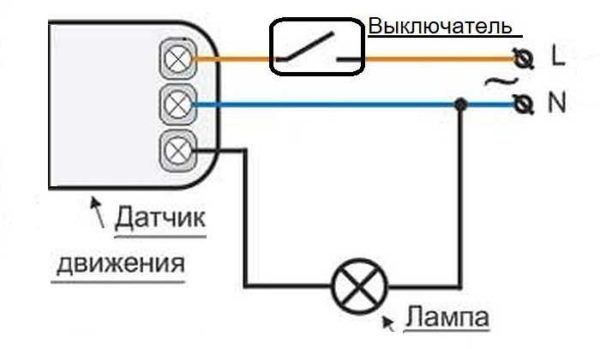
Connection diagram of a motion sensor on the street or in a room with windows. In place of the switch there may be a photo relay
They are also placed in the phase wire break. Only when using a light sensor, it must be placed in front of the motion relay. In this case, it will receive power only after it gets dark and will not work "idle" during the day. Since any electrical device is designed for a certain number of operations, this will extend the life of the motion sensor.
All the schemes described above have one drawback: the lighting cannot be turned on for a long time.If you need to carry out any work on the stairs in the evening, you will have to move all the time, otherwise the light will periodically turn off.
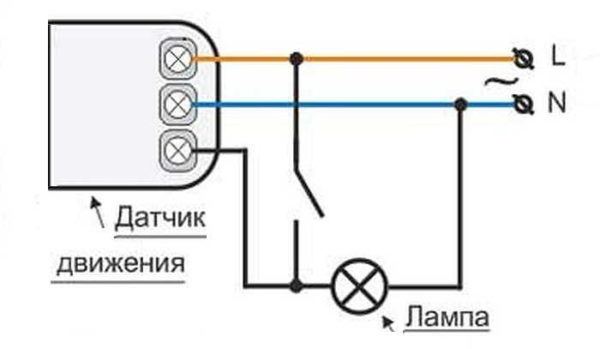
Connection diagram of a motion sensor with the possibility of long-term lighting (bypassing the sensor)
To enable the lighting to be switched on for a long time, a switch is installed in parallel with the detector. While it is off, the sensor is in operation, the light turns on when it is triggered. If you need to turn on the lamp for an extended period, flip the switch. The lamp is on all the time until the switch is returned to the "off" position.
Adjustment (setting)
After installation, the motion sensor must be configured to turn on the light. To adjust almost all parameters, there are small rotary controls on the case. They can be rotated by inserting a fingernail into the slot, but it is better to use a small screwdriver. Let's describe the adjustment of a DD type motion sensor with a built-in light sensor, since they are most often installed in private houses for automation street lighting.
Tilt angle
For those sensors that are mounted on walls, the tilt angle must first be set. They are fixed on swivel brackets, with the help of which their position changes. It must be chosen so that the controlled area is the largest. It will not be possible to give exact recommendations, since it depends on the vertical viewing angle of the model and on how high you hung it.
The optimum installation height for the motion sensor is about 2.4 meters. In this case, even those models that can only cover 15-20 ° vertically control sufficient space. Tilt adjustment is a very rough name for what you will be doing. You will gradually change the angle of inclination, check how the sensor works in this position from different possible entry points. Easy, but dreary.
Sensitivity
On the case, this regulation is signed SEN (from English sensitive - sensitivity). The position can be changed from minimum (min / low) to maximum (max / hight).
This is one of the most difficult settings, since it determines whether the sensor will trigger on small animals (cats and dogs). If the dog is large, it will not be possible to avoid false positives. With medium and small animals this is quite possible. The setup procedure is as follows: set it to a minimum, check how it works for you and for the inhabitants of smaller stature. If necessary, gradually increase the sensitivity.
Delay time
The shutdown delay range is different for different models - from 3 seconds to 15 minutes. It must be inserted all the same - by turning the adjusting wheel. Signed usually Time (translated from English "time").
Everything is relatively easy here - knowing the minimum and maximum of your model, you can roughly choose a position. After turning on the flashlight, you freeze and mark the time after which it will turn off. Next, change the position of the regulator in the desired direction.
Illumination level
This adjustment refers to the photo relay, which, as we agreed, is built into our motion sensor to turn on the light. If there is no built-in photo relay, it simply will not exist. This regulation is signed by LUX, the end positions are signed by min and max.
When connecting, set the regulator to the maximum position. And in the evening, at that level of illumination, when you think the light should already turn on, turn the regulator slowly to the min position until the lamp / lantern turns on.
Now we can assume that the motion relay is configured.

